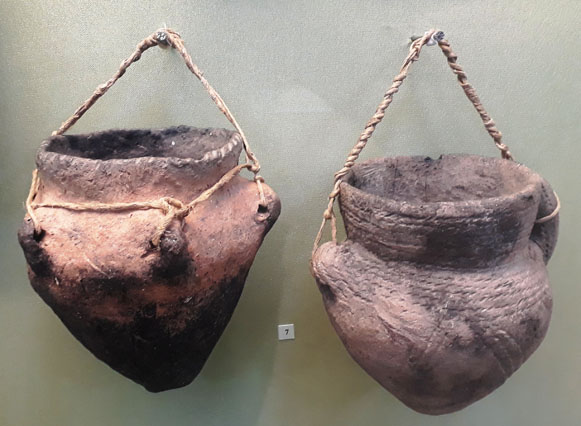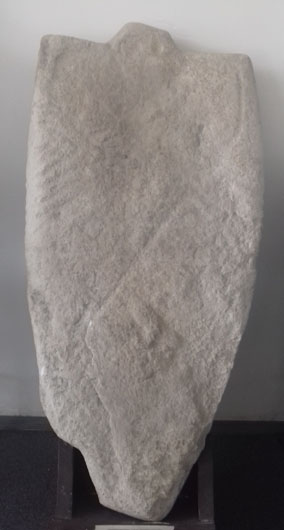Yamna archeological culture complex
Yamna archeological culture complex (ямна культурно-історична спільність; iamna kulturno-istorychna spilnist; or ямна КІС; iamna KIS) also referred to as Yamnaya or Pit Grave culture. An Eneolithic–Early Bronze Age (ca. 3600–2500 BC) complex of nomadic and semi-nomadic population groups spread over the Great Eurasian Steppe. While the Core Yamna population likely emerged in the early 4th millennium BC in the lower Dnipro River Valley in today’s Ukraine, at its maximum expand, the Yamna archeological culture complex stretched from the Pannonian Basin in today’s Hungary to the Altai Mountains of western Mongolia. The Yamna and Yamna-derived and related people had a profound influence on social structure, economy, language, and the belief systems of the people of Europe as well as large swaths of Asia.
Burials of the Yamna culture were first identified and characterized in the early 20th century by Vasilii Gorodtsov who based his research on archeological artefacts excavated on the territories of today’s Ukraine. Later, such archeologists as Nikolai Merpert and (until recently) David W. Anthony considered the Yamna to have originated in the steppes along the Volga River, and focused their attention on the study of that region. However, the most recent archeological and archaeogenetic research has demonstrated that the most likely location for the emergence of the Core Yamna culture was the Dnipro River Valley in today’s southern Ukraine.
Various archaeological groups, consisting of regional types within each geographic locality, are recognized by archaeologists within the Yamna archeological culture complex. Material culture, such as pottery styles, has been the main basis for the distinction among local Yamna culture types. However, regional divisions within the Yamna complex, based on ceramic similarities, often do not align with traditional local variants. In fact, comparisons of published pottery series from local Yamna groups frequently reveal more differences than similarities. The main distinction of the Yamna compared to other prehistoric archaeological groups is their burial traditions. Yamna burials often utilized kurhans constructed during the Eneolithic period by their predecessors of the Serednii Stih culture complex, but the Yamna people also built kurhans of their own.
The vast majority of kurhans containing Yamna burials are found in the steppe zone north of the Black Sea, particularly in its northwestern part situated in Ukraine and Moldova. Accordingly, of the estimated 10,000 kurhans in the Prut River-Dnister River interfluve, half are thought to have been constructed by the steppe populations of the Eneolithic Period and by the Bronze Age Yamna. By the late 1980s, the number of excavated Yamna burials in Ukraine had exceeded 10,000. The highest density of Yamna graves is documented in the Boh River region, where nearly 6000 kurhans are estimated to have existed. The number of Yamna-related kurhans, the density of Yamna burials, and the number of stratigraphic phases attributed to the Yamna period decrease significantly towards the eastern Balkans and the Pannonian Basin (in today’s Hungary) in the west and the Volga-Ural periphery of the Yamna domain in the east.
The Yamna kurhans frequently exhibit a complex stratigraphy. A typical Yamna kurhan contains a primary burial, which can be that of the Yamna culture or of an earlier steppe population of the Eneolithic Period, as well as inlet burials. Larger kurhans may contain several smaller mounds covered by a common fill. Burials within each mound layer are usually arranged in circles, possibly linked to ancient beliefs about celestial movements. Elements of mound architecture include ditches, cromlechs, and retaining walls. Burial chambers are usually rectangular and about a third of burial pits have ledges. Some grave pits have ceilings made of logs or stone slabs. Anthropomorphic stelaes are occasionally found as part of the stone ceiling. Rarely, wagons or their parts, and, even more infrequently, constructions styled as boats, are found in Yamna burials as part of the funerary installation.
The position of the interred in Yamna graves varies considerably, with over half being flexed on the back with bent legs and arms extending along the body or slightly bent, hands on hips or near the pelvis, abdomen, or chest, the right arm sometimes extending along the body. Interments with body either tilted to the left or laying on the left side are also found among Yamna burials. While some archeologists consider the burial position to be specific to the chronological phases of the Yamna, a clear correlation between chronology and the body position is difficult to discern. Other archeologists propose that burial postures may reflect social factors rather than chronological indicators.
During the early Bronze Age, funeral traditions became more unified across the Yamna territory compared to burial practices of steppe populations from the preceding Eneolithic Period. Nevertheless, considerable differences in pottery styles and the number and variety of metal artifacts found in burials persisted among different Yamna groups, due to varying Eneolithic substrates and cultural contacts in different territories of the Yamna archaeological complex.
It is possible that many of the Yamna-related kurhans were constructed in the vicinity of ancient roads and trade routes, some of these formed in the early Eneolithic Period for the transport of copper and other commodities between the copper centers of eastern Balkans and the communities along the Volga River and in the Caucasus Mountains. Kurhans and surface-level arrangements with a pronounced ritual function (sanctuaries) appeared during the Eneolithic Period as well, and the kurhan sanctuary construction persisted into the early Bronze Age. A particularly dense concentration of the latter is found in the lower Dnipro River Valley, in a general vicinity of an Eneolithic–Early Bronze Age Mykhailivka archeological site, which is considered a geographic location from which Yamna itself had likely emerged.
Recent archaeogenetic studies indicate that Yamna genetic ancestry was established around the turn of the 4th millennium BC. The chronologically earliest individual with a most common (Core) Yamna genetic profile, dating to ca. 3600–3400 BC, comes from the second layer of a three-layered Mykhailivka archeological site in the Kherson region of Ukraine. The Core Yamna genetics was formed from ancestries originating in the Caucasus Mountains and the Lower Volga region, with an admixture from the Neolithic hunter-fisher-foragers of the Dnipro River Valley in Ukraine. This genetic profile also characterizes populations of the Serednii Stih culture, who were direct genetic ancestors of the Yamna.
As the Yamna people expanded westward from the Dnipro River Valley, they added an admixture of the European farmers to their genetic profile. The Yamna groups that expanded eastward, towards the Volga River Valley and southern Siberia, maintained the unadmixed Core Yamna ancestry. It is possible that Yamna groups in the Volga Valley continued to migrate further north, ultimately reaching the Baltic region where they admixed with late Eneolithic populations of northern Europe to form the Corded Ware culture complex, subsequently reaching central Europe by the middle of the 3rd millennium BC. As an alternative possibility, the formation of the Corded Ware culture complex may have resulted from the northward migration of the Yamna along the Dnipro River Valley and its admixture with the Eneolithic populations of northeastern Europe. The Corded Ware culture is likely responsible for contributing Yamna genetic ancestry to the central and western European genetic pool, while the genetic influence of the Yamna proper was probably limited to the northwest Black Sea region and eastern Balkans.
BIBLIOGRAPHY
Gorodtsov, Vasilii. “Rezul'taty arkheologichekikh issledovanii v Iziumskom uezdie, Kharkovskoi gubernii 1901 goda” in Trudy XII Arkheologicheskogo S'ezda v Kharkove 1902 goda, vol 1 (Moscow 1905)
Gorodtsov, Vasilii. “Rezul'taty arkheologichekikh issledovanii v Bakhmutskom uezdie, Ekaterinoslavskoi gubernii 1905 goda” in Trudy XIII Arkheologicheskogo S'ezda v Ekaterinoslavskoi gubernii, vol 1 (Moscow 1907)
Telegin, Dmitrii. Seredn'ostohivs'ka kul'tura epokhy midi (Kyiv 1973)
Merpert, Nikolai. Drevneishie skotovody Volzhsko-Uralskogo mezhdurechia (Moscow 1974)
Mallory, James P. In Search of the Indo-Europeans: Language, Archaeology and Myth (London 1989)
Gimbutas, Marija. The Kurgan Culture and the Indo-Europeanization of Europe: Selected Articles from 1952 to 1993 (Washington, DC 1997)
Mallory, James P. “Yamna Culture” in Encyclopedia of Indo-European Culture, ed. Fitzroy Dearborn (London 1997)
Ivanova, Svitlana, Nikitin, Alexey G.; Kiosak, Dmytro. “Pendulum migrations in the Circum-Pontic steppe and Central Europe during the Paleometal Epoch and the problem of genesis of the Yamna culture,” Archeologia 26 (2018)
Anthony, David W. “Early Yamnaya chronology and origins from an archaeological perspective,” in Yamnaya Interactions: Proceedings of the International Workshop held in Helsinki, 25–26 April 2019, ed. Volker Heyd, Gabriella Kulcsár, and Bianca Preda-Bălănică (Budapest 2021)
Nikitin, Alexey G. et al. ‘A Genomic History of the North Pontic Region from the Neolithic to the Bronze Age,’ Nature 639 (2025)
Alexey G. Nikitin
[This article was written in 2024.]


